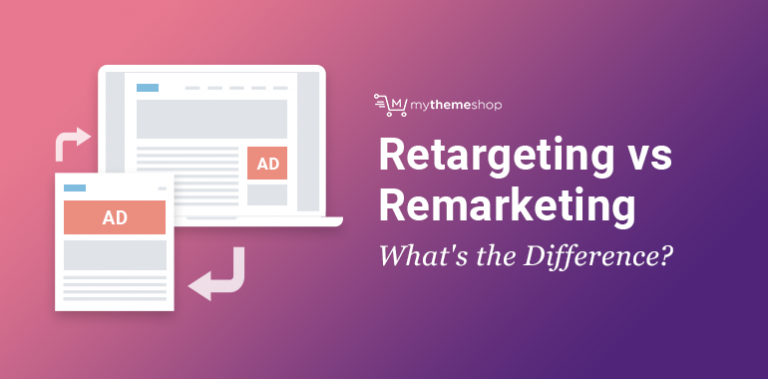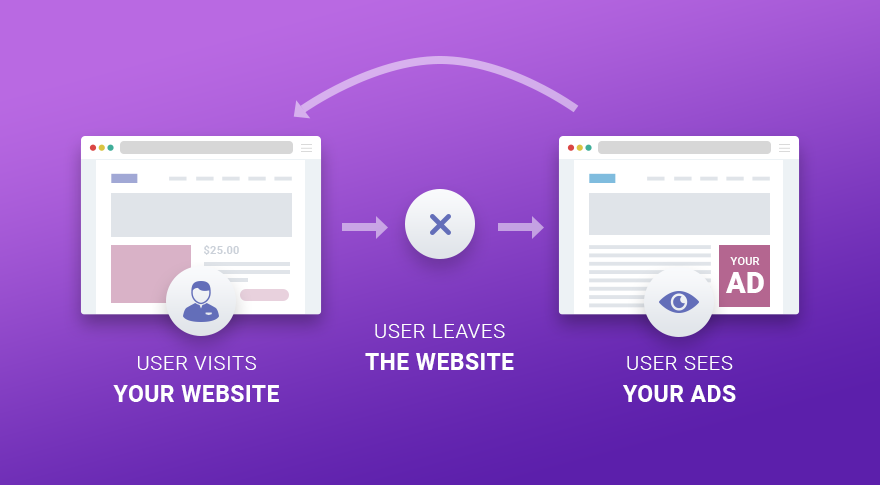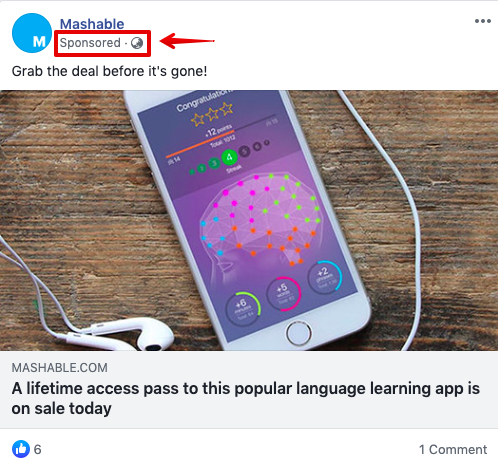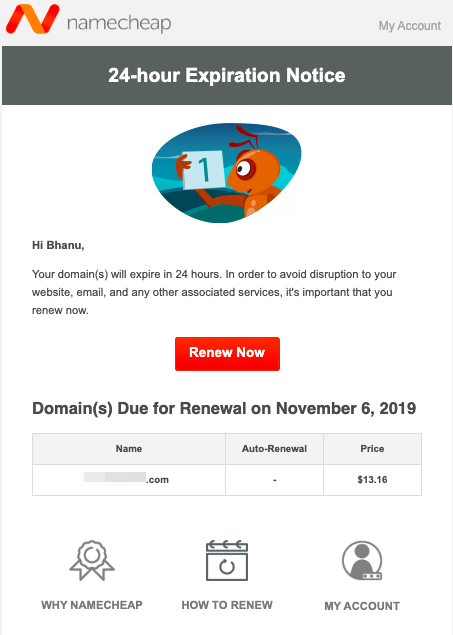
Emails, Facebook, Google Adwords and other online marketing channels have revolutionized the traditional marketing game. Marketers are smitten by them for two reasons.
1. Online marketing is a lot cheaper than traditional marketing channels such as TV, Radio and Newspapers.
2. You can reach a highly-targeted audience that would be interested in buying your product or services.
Before strategizing a marketing campaign, you as a marketer should be familiar with two terms: retargeting. You will certainly generate more ROI if you are able to understand these terms.
We will explore the details of this post in detail to help you understand it. difference between retargeting vs. remarketing You can also learn how to use them both to create a highly optimized marketing campaign. drive more conversions The sales team is always ready to help.
What is Retargeting?
The term is used in a broad scope to refer to targeting users who have already engaged with your brand through your website. website It is a term used to describe the display of online/display ads to users who have interacted with your online brand entity earlier. Users who have already interacted online with your brand entity will be shown online/display advertisements.

Certain Ad networks like Google Display Network and Facebook Ad Network give you the ability to retarget those users who have taken a certain action on your website. This could include viewing a certain page. buying a product from your site. These data are saved on the web browsers of users in the form a “cookie”, which records what actions they took on your website.
You can target your users depending on their actions on your website.
If you are a frequent visitor to ecommerce sites you may have noticed ads for the same brands (sometimes displaying the same/similar product) on third-party websites. These ecommerce websites are retargeting their customers by displaying their ads on other sites.
Retargeting can be a great way to reconnect with users that have taken action in the past. your website But they didn’t become a customer, or complete a sale. Retargeting allows you to reengage those people, and have conversations that will help you convert them into customers.
Retargeting can take place in two ways:
1. Pixel:
This is an example of a simple code Placement of the item your website. It can be used to track conversions, and actions taken on your website. These actions can be used to segment a specific audience for retargeting. For example, you can retarget users who added your product to the cart but did not complete the transaction.
2. List/Database based:
This is mainly the list of clients, which can be theirs or theirs. emails Or phone numbers. You can retarget these customers using various ad platforms such as Google Ads and Facebook Ads.
Upload the list of customers consisting only of email addresses on the platform. This list can be used to run both display and search ads.
You have a problem, let’s say. database Users who have signed up for your online newsletter. You can target these users with ads to show them relevant products. You can sell the same product to the person repeatedly.
This method is not without its disadvantages. Customer may have multiple email addresses or phone numbers. Your ads may not show up to certain audiences if the customer does not use the email/phone numbers you have stored in your database.
You can use either of the two methods to run retargeting campaigns on primarily all the majority social media channels like Facebook, Instagram, Twitter, and LinkedIn.
Check out this great example of a display retargeting ad.

Entrepreneur and other large content sites do this very well. Users who previously visited their site are usually targeted again. They can then drive that user back to their website.
Mashable brings us another interesting article.

It’s really incredible, isn’t?
Now it’s time for our next term.
What is Remarketing?
Even the most experienced marketers can get this term wrong. Most people confuse retargeting with the same term.
Remarketing involves sending emails that re-engage the customer in their inbox. This is preferred when customers abandon their shopping carts or add items to their wishlist, but don’t purchase them for a period of time.
We all know that spam and promotional emails fill most of your email. Email is the most authentic and legitimate channel. Nearly 94% of people use email. This is an excellent way to engage with a customer who has abandoned their cart.
This is an example that shows how remarketing actually works.

It is a very effective strategy for increasing conversion rates. The best part, the click-through rate for such remarketing campaigns is very high as you are dealing with a highly targeted group of the target audience. It also helps to increase conversions.
Retargeting vs Remarketing – Understanding the Difference
Both strategies aim to increase sales by engaging an audience who has already interacted with your product in some way.
In essence, you are trying to reconnect with a very specific group of people. The medium you use to target your audience is the main difference.
Retargeting is the process of showing banners, display ads and text ads to selected groups whose activities are tracked and saved as cookies. Remarketing is basically email remarketing where you are targeting a selected database using emails only.
Both methods can be automated to make a marketing strategy more effective. You can automate retargeting using Google Ads and Facebook. You can trigger ads on both platforms based off cookies. This happens in real time, so that your ad will appear as soon as the user leaves your website and visits another Ad Network website.
You can create autoresponders for Remarketing based on different trigger points. You can, for example, send the next email to the user after they have not opened your previous email in two days.
How can you run a campaign effectively?
Retargeting:
1. Segmentation of Audience:
Segmentation of the audience based on actions taken on your website. You should not treat all visitors to your website who have visited a particular page as a single group.
Segment users based on different sections in your website. Imagine you sell products in two different categories, Computers and Automobiles. For effective targeting, there will be two audience segments – the users who visited the Automobile section and the others who visited the computers section.
Compare the results if all website visitors are grouped together. Your automobile ad might not be relevant for a certain audience that hasn’t been to that section of your website. You can reach a very narrow, highly targeted audience by creating two different audience segments. This will increase the likelihood of conversion.
2. Advertisement Blindness:
As a strategic approach, refrain from using the exact same ad creatives in multiple campaigns for the same audience segment. The user will eventually become annoyed by being forced to view the exact same ad several times. This will also decrease their trust in your brand, as they are forced to click your ad.
3. Retargeting on multiple platforms:
You can retarget the user on different platforms. This is something you must have done with Amazon. Display ads are targeted to multiple networks, so you will see them on every website you visit. This can help to increase the recall value, and engage your audience again without much change in time.
1. Subject LineThe subject line of an email campaign is just as important as the headline of the Ad. Remarketing, unlike retargeting where the user only needs to click once to get to the destination, is a bit trickier as it requires at least two clicks (the first click for the email, followed by a second click within the email to get to the product page). Try to create a subject line that will entice the user to open and click the email.
2. Avoid SpammingYou should not send spam to your customers if they don’t read your email. You will end up in their spam folder. It will eventually also affect your domain’s reputation. You’d then find that even your genuine emails would end up in spam boxes.
3. Warm up your body with a warm-up planMarketers do not give this area much attention. Sending emails in small batches is a good way to warm up your audience. You can scale your email campaign once you have a CTR of 3 to 5%. You need to have a high CTR in order to avoid being placed in the spam folder of your users.
4. Say no to non-opted dataSending emails from your brand into an unknown database is not a good idea. Marketers in multiple niches run remarketing campaigns using purchased data. This does nothing but bring down the reputation of their domain.
Final Thoughts
Retargeting is a powerful way to target your audience with your brand or products.
Most marketers begin with retargeting, as remarketing requires real email ids from users who previously interacted your brand.
Email campaigns can be used to remarket these leads.
It is clear that both methods are better than any other marketing technique. These strategies will help you market your product to your target audience in the most efficient way, resulting in better sales and conversions.
Now that you know the difference between retargeting, remarketing and retargeting, we hope that you can now make an informed decision. Please share your opinions in the section below. We will be glad to answer your questions.